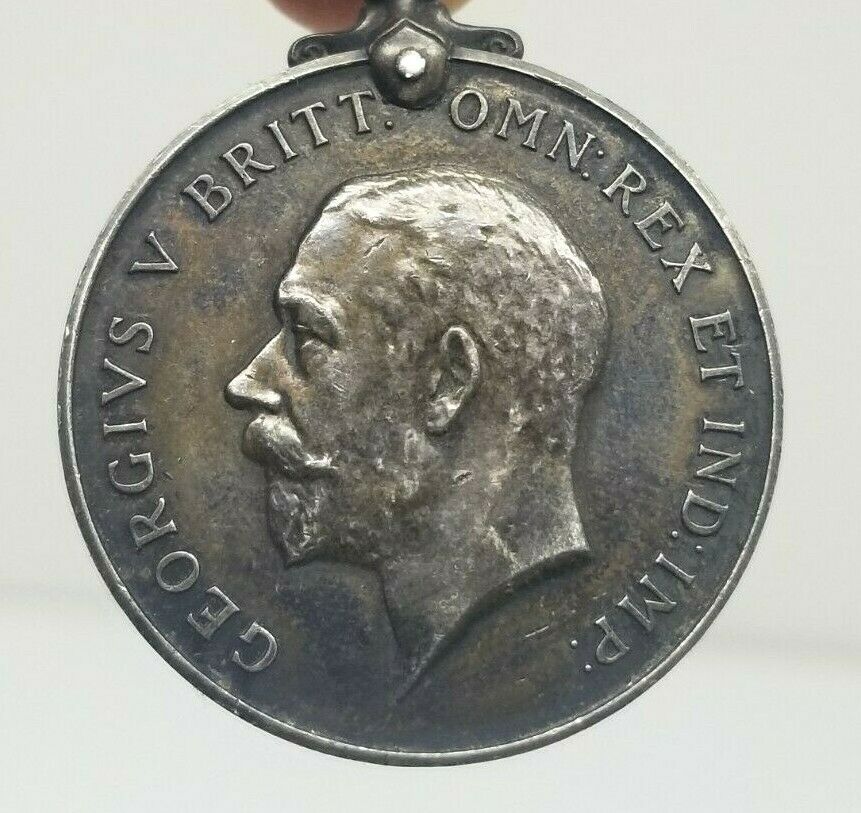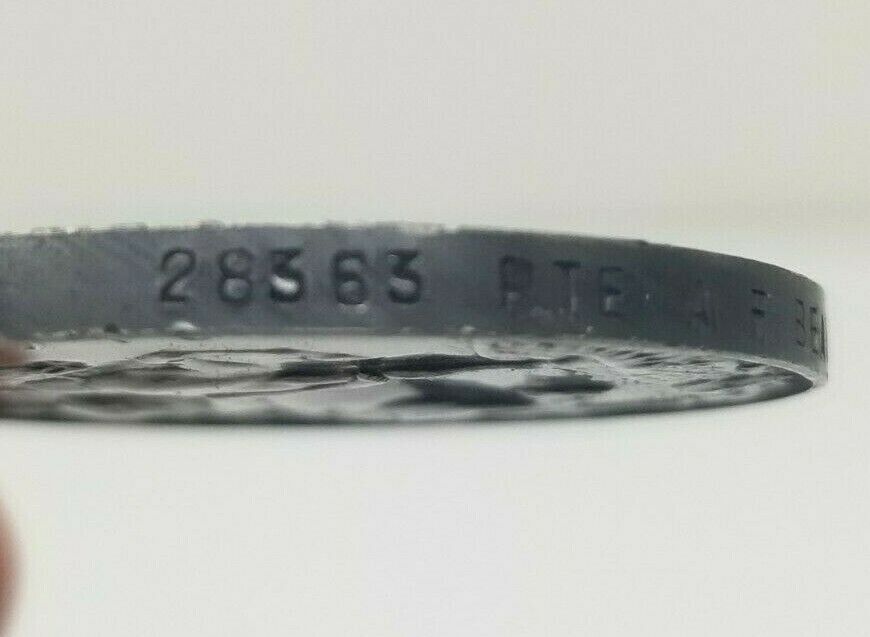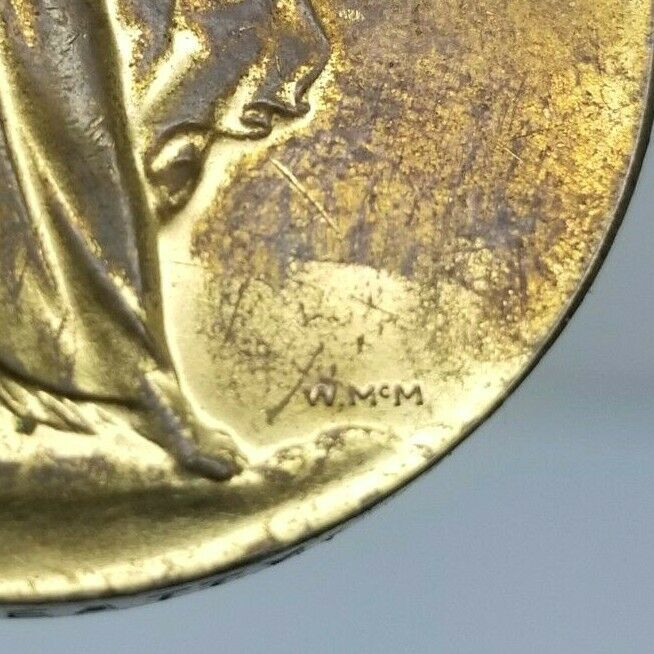-40%
WW1 SILVER British War & Bronze Victory Medals w MATCHING NAMES
$ 44.24
- Description
- Size Guide
Description
WW1 SILVER British War & Bronze Victory Medals w MATCHING NAMESVery nice condition with small a mount of wear from handling and storage. No ribbons. The War medal (Cast in silver) is in better condition with nice toning, a few small blemishes and knicks. The Victory medal shows some tarnish and fading with minor marks, mars, and scratches. Both medals were awarded to the same soldier (each of these authentic medals were stamped with service number, name, and rank of the recipient): #28363 PTE A. F. Beatty L'pool R" (PTE is Private 1st or 2nd class in the British army) Please see photos for more details.
The British War Medal was instituted on 26 July 1919 for award to those who had rendered service between 5 August 1914, the day following the British declaration of war against the German Empire
, and the armistice of 11 November 1918,
both dates inclusive
The British War Medal was awarded to all officers and men of British and Imperial forces who had served for a prescribed period during any stage of the war, or who had died on active service before the completion of this period. Eligibility was subsequently extended to cover service in 1919 and 1920 in mine-clearing at sea as well as participation in operations in North and South Russia, the eastern Baltic
, Siberia
, the Black Sea
and the Caspian Sea
, during the allied intervention in the Russian Civil War
The medal, struck by the Royal Mint, is a silver or bronze disk, 36 millimetres (1.4 in) in diameter, with a straight clasp suspender without swivel.
Obverse
The obverse shows Sir Bertram Mackennal's bareheaded effigy of King George V facing left, with the legend "GEORGIVS V BRITT: OMN: REX ET IND: IMP:" (George V, King of all the British Isles and Emperor of India)
Reverse
The reverse, designed by William McMillian, shows Saint George naked on horseback and armed with a short sword, an allegory of the physical and mental strength which achieved victory over Prussianism. The horse tramples on the Prussian eagle shield and the emblems of death, a skull and cross-bones. In the background are ocean waves and just off-centre near the right upper rim is the risen sun of Victory. The years "1914" and "1918" appear on the perimeter in the left and right fields respectively.
Naming
The recipient's name, rank, service number and unit are impressed on the bottom edge of the medal. On medals awarded to Army officers, with the exception of the Royal Artillery, the name of the regiment or corps was omitted. No ship name is given, with the exception of medals to New Zealand personnel.
The
Victory Medal
(also called the
Inter-Allied Victory Medal
) is a United Kingdom and British Empire First World War campaign medal.
The award of a common allied campaign medal was recommended by an inter-allied committee in March 1919. Each allied nation would design a 'Victory Medal' for award to their own nationals, all issues having certain common features, including a winged figure of victory on the obverse and the same ribbon. Fourteen countries finally awarded the medal.
The Victory Medal (United Kingdom) was issued to all those who received the 1914 Star or the 1914-15 star, and to most of those who were awarded the British War medal. It was not awarded singly.
To qualify, recipients need to have served in the armed forces of the United Kingdom or the British Empire, or with certain recognized voluntary organizations, and have entered any theatre of war between 5 August 1914 and 11 November 1918. While home service did not count, United Kingdom based members of the RAF who were actively engaged in the air against the enemy did qualify, as did those who flew new planes to France. Women qualified for this and other First World War campaign medals while serving in nursing and auxiliary forces in a theatre of war.




















